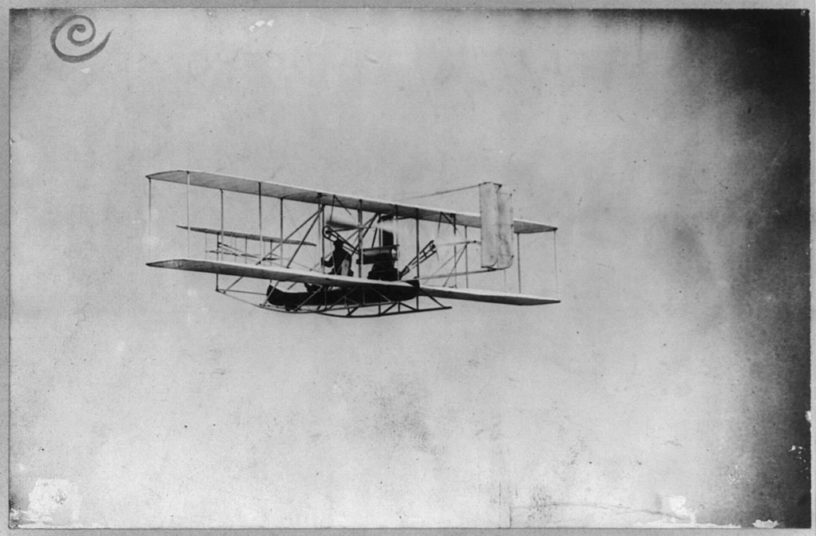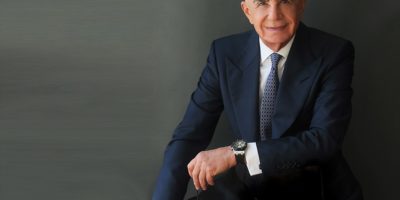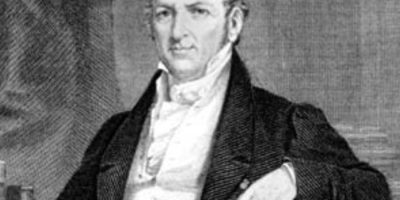Top 10 Remarkable Facts about The Wright brothers

Orville Wright by Miscellaneous Items in High Demand from Wikimedia Commons
Wilbur and Orville Wright were pioneers of aviation in the United States. The Wright brothers made history when they flew the first powered, sustained, and controlled aeroplane flight in 1903.
Wilbur and Orville Wright flew the first powered aircraft on December 17, 1903. The brothers flew their aircraft, known simply as the Flyer, four times just outside of Kitty Hawk, North Carolina. The longest flight lasted only 59 seconds, but it cemented the Wrights’ place in aviation history.
1. They were four years apart in age when they were born

Wright Brothers at home by Smithsonian’s National Air and Space Museum from Wikimedia Commons
Wilbur Wright, the elder brother, was born in Millville, Indiana, in 1867, and was followed four years later by Orville Wright, who was born in Dayton, Ohio, in 1871. Due to their father’s position as a bishop, the family travelled about a lot – 12 times before settling in Dayton in 1884 – and the duo is named after two important preachers who their father adored.
Their father gave them a toy helicopter based on drawings by Frenchman Alphonse Pénaud in 1887. Before making their own, the exciting duo played with it until it broke apart. This, they subsequently said, was the beginning of their fascination with flight.
2. Neither of them graduated from high school
Despite the fact that they were both intelligent and talented, neither brother received a certificate for their studies. Wilbur did not receive his graduation despite having completed four years of high school due to the family’s continual migration.
Wilbur’s luck would run out again in 1886, when he was hit in the face with a hockey stick, knocking out both of his front teeth. Despite his ambitions of attending Yale, he was pushed into a condition of isolation in which he was effectively housebound. He read much while at home, caring for his dying mother and assisting his father through religious issues.
Orville had struggled in school since he was a tiny child, and had even been expelled from his primary school on one occasion. After creating his own printing press, he dropped out of high school in 1889 to establish a printing company, and he was joined by Wilbur to create a newspaper together.
3. They were motivated by the tragic story of a pioneer of flight
Otto Lilinethal influenced the Wright brothers. Lilienthal was a German aviation pioneer who was the first to fly gliders successfully. Photographs of his astonishing flying efforts were published in newspapers, spreading the idea that human flight may be a reality. The Wright brothers, who were awestruck by Lilienthal’s drawings, embraced this concept wholeheartedly.
However, like many others who attempted to accomplish this feat, Lilinethal would be slain by his own creation. He took his final flight on August 9, 1896, when his glider stopped and fell, breaking his neck on landing.
Following his own successful maiden flight in 1909, Orville made a visit to Lilinethal’s widow on behalf of the brothers in Berlin. He paid respect to Lilinethal’s enormous effect on the two of them, as well as the intellectual legacy they owed him.
4. Wing-warping was revealed to be the unresolved key to the ‘flying issue

Wright brothers glider tests by Wikimedia Commons
Following the death of another aviation pioneer, Percy Pilcher of the United Kingdom, in a botched flight in 1899, the Wright brothers began to investigate why these glider attempts were failing. Despite having promising knowledge of wings and engines, the Wright brothers proceeded to investigate what they regarded to be the third and most important aspect of the ‘flying issue’ — pilot control.
They looked at how birds slanted the angle of their wings to roll left or right, comparing it to how cyclists regulate their movement but found it difficult to apply this to man-made wings.
Wilbur inadvertently began twisting a lengthy inner-tube box at their bicycle business, and they found wing-warping. While earlier engineers strove to create aircraft with ‘inherent stability,’ believing that pilots would not respond quickly enough to shifting winds, the Wright brothers were adamant that the pilot should have complete control and began designing structures with purposeful instability.
5. They thought they’d have to wait years before they could fly
The brothers started testing their wing-warping idea in 1899, which required twisting the kite’s wings with four cords controlled by the pilot, forcing it to turn left and right on command.
While the brothers’ attempts yielded some results, they departed Kitty Hawk disheartened since their gliders barely provided one-third of the lift they sought and occasionally turned in the opposite direction. On the way home, Wilber lamented that man would not be able to fly for a thousand years.
6. They constructed a wind tunnel to test their concepts
The brothers began investigating previous engineers’ calculations, and early testing involving various bicycle parts led them to feel that prior statistics supplied by prominent early aviator John Smeaton or even Lilinethal were inaccurate, and were impeding their development.
A more advanced six-foot wind-tunnel test was done, inside which the brothers flew miniature sets of wings, assisting in the determination of which flew better — unsurprisingly, those that were longer and narrower.
These trials also revealed that Smeaton’s estimates were erroneous, paving the path for the development of better test models.
7. In 1903, they achieved the first powered flight
The brothers ran into issues when it came to adding power to their flying aircraft, despite having the proper construction. None of the engine technicians they contacted could design a lightweight engine that could be used to fly in it. They went to their bicycle shop mechanic Charlie Taylor, who produced a sufficient engine in under 6 weeks. They were ready to put their skills to the test once more.
They arrived in Kitty Hawk on December 14, 1903. They returned on December 17th after an unsuccessful effort on this day, and the brothers’ completed plane lifted off without a hitch.
Orville flew the plane’s maiden flight at 10:35 a.m., which lasted 12 seconds and covered a distance of 120 feet at a speed of 6.8 mph. A piece of history had been written.
8. The flight was received with suspicion at first

Wright 1902 glider group photo by Smithsonian National Air and Space by Wikimedia Commons
Few people saw the initial flight, and despite the existence of images shot by witnesses, few people realized it happened. Because of the brothers’ secrecy and desire to keep their ideas hidden, little media attention was produced.
When word did get out, however, there was a lot of doubt, with a headline in the 1906 Paris edition of the Herald-Tribune asking, ‘FLYERS OR LIARS?’
When the brothers’ hometown of Dayton recognized them as national heroes years later, Dayton Daily News publisher James M. Cox admitted that they didn’t report the story at the time because, “Frankly, none of us believed it.”
9. Their status as aviation pioneers was confirmed by a series of public flights
Despite their misgivings, the team obtained contracts for the production of more aircraft with the US Army and a French business in 1907 and 1908. However, this was contingent on the brothers doing successful public flight demonstrations with both a pilot and a passenger on board.
As a result, Wilbur and Orville flew to Paris and Washington, D.C., respectively, dazzling onlookers with their remarkable flying demonstrations. They flew figure-eights, pushing their own height and duration records farther. Wilbur capped a remarkable year in 1909 by flying down the Hudson River for 33 minutes, circling the Statue of Liberty and astonishing millions of onlookers in New York.
Any suspicion had vanished, and the two had almost become celebrities, establishing their status as the inventors of practical air flight. As a new period of conflict arose, their innovations would become increasingly important.
10. Their mother was just as smart

Susan Catherine Koerner Wright by E.J. Godshall from Wikimedia Commons
While their father’s toy inspired them, the Wright brothers’ mechanical knowledge came from their mother, Susan Koerner Wright. She was said to be able to construct anything by hand, including a sledge and other toys.
Basically, without the wright brothers, we wouldn’t be enjoying the benefits of aviation and we most suddenly wouldn’t be a connected world as we currently are.
Planning a trip to Paris ? Get ready !
These are Amazon’s best-selling travel products that you may need for coming to Paris.
Bookstore
- The best travel book : Rick Steves – Paris 2023 – Learn more here
- Fodor’s Paris 2024 – Learn more here
Travel Gear
- Venture Pal Lightweight Backpack – Learn more here
- Samsonite Winfield 2 28″ Luggage – Learn more here
- Swig Savvy’s Stainless Steel Insulated Water Bottle – Learn more here
Check Amazon’s best-seller list for the most popular travel accessories. We sometimes read this list just to find out what new travel products people are buying.










